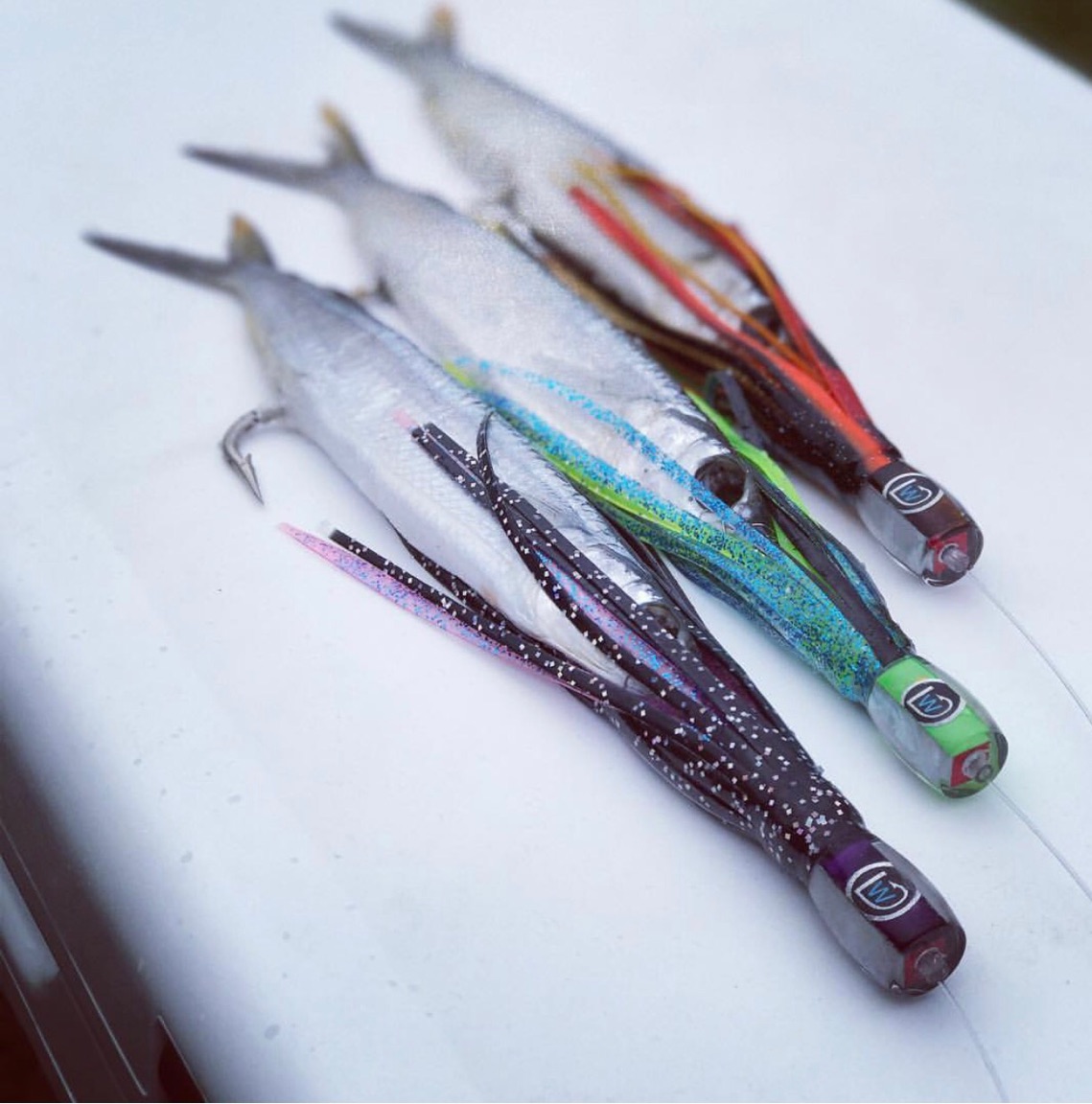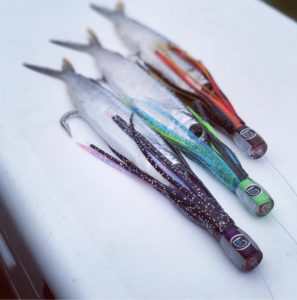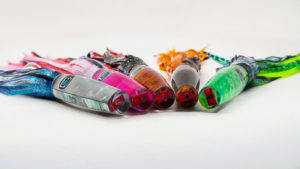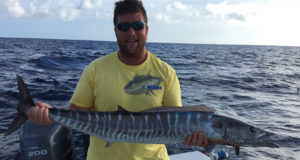Fisherman have been debating which type of bait works best on docks around the world for years. However, when it is all said and done, each type of bait is a different tool for fisherman, much like a mechanic would have various types and sizes of wrench’s. The purpose of this article is to compare and contrast the pros and cons of each.
Live Baits – the first thing that comes to mind is the old saying “it is easier to feed them, than it is to fool themâ€. And while it cannot get more realistic than the actual thing, live baits come with their own set of challenges:
- Acquiring live bait is neither easy or cheap. To fill your livewell with ample baits for a day offshore you either need to spend significant time catching your own bait or purchase your bait from the local bait guy. A dozen baits can range from $40 to $120 per dozen depending on type of bait and time of year.
- For most fisherman storing live bait is typically not an option. Due to this, the expensive live baits you just purchased from the bait guy are only good for one fishing trip.
- Live baits that are stored in a bait pen require daily attention to prevent starvation or being eaten by predators like sharks.
- Live baits must be bump trolled or pitched to a free swimming fish. Â The amount of ground you can cover compared to trolling dead bait or lures will be much less. However, they are a great option if you are fishing a very condensed area or waiting for fish to come to you.
Dead Baits – such as rigged ballyhoo or mullet represent the middle ground between live bait and lures.
- Fisherman have two options, they can purchase ballyhoo that are pre -rigged or purchase unrigged ballyhoo and rig them on their own. The down side to pre- rigged ballyhoo is they are often rigged using extremely low quality hooks and crimps which are not up to the stress of a long fight with a qualty fish. If rigging your own ballyhoo, you can use higher quality hooks, crimps and leader that can hold up to a large fish. However the downside to rigging ballyhoo is time consuming and very messy. Part of the reason I started a lure business was because I got tired of smelling like a ballyhoo every Friday night during tournament season.
 Compared to live baits dead bait is relatively easy to store in any bait freezer if vacuum bagged to prevent freezer burn. You can typically only refreeze a ballyhoo one time before they become mush and loose their consistency.
Compared to live baits dead bait is relatively easy to store in any bait freezer if vacuum bagged to prevent freezer burn. You can typically only refreeze a ballyhoo one time before they become mush and loose their consistency.- Ballyhoo are prone to washing out if they are trolled too quickly. To increase the distance you can troll a rigged ballyhoo I recommend using a small lure as a topper to reduce wash out. We frequently use our micro series with the skirts trimmed short for excellent results.
- Most fish tend to strike a bait’s tail to disable it and then spin around and finish the whole meal. Because of this, if it very common to retrieve a ballyhoo that is missing it’s tail. I personally find nothing more frustrating than knowing I missed a fish as it hit the bait behind the hook. When ballyhoo are rigged with the hook in the middle, as most are, you dramatically reduce your hook up ratio.
Trolling Lures – lures represent the opposite end of the spectrum when compared to live bait.
- Lures typically have a significantly better hook up ratio compared to live or dead bait. This is because anglers are able to rig a lure using the ideal hook placement with a single or double hook set. Most successful tournament anglers agree that small to medium size lures perform best with a single hook set with the hook located in the rear most part of the lure skirt. Larger lures with a greater strike zone perform best with a double hook set. Lastly since most lures come rigged with very high quality hooks, crimps, and terminal tackle they are excellent for extended battles with big fish.

- Lures do not need to be frozen or stored in a live bait pen. Because of this they are excellent for extended trips in the islands when bringing large amounts of frozen bait or live bait is simply not possible. In addition, since lures do not need to be procured every morning prior to departing the inlet you can often times be the first boat on the fishing grounds while others search for bait.
- While trolling lures are typically not cheap, they are cost effective when you compare the number of fish a lure can catch compared to a rigged ballyhoo or live bait. I use lures heads that have caught upwards of 50 fish with only scratches to show. Try doing that with a ballyhoo or blue runner.
- Lastly, they are fish after all so don’t give them too much credit. Fish are programmed by nature to do two things: eat and reproduce. I personally don’t believe that fish are smart enough to realize that lures aren’t food, at best they may notice that it is different. When the lure is trolled by, the fish has already decided it is going to eat the lure from 30+ feet away.
When it is all said and done, no one type of bait is better than the other. Each is a different tool with their own set of pros/cons to be used by fisherman with a wide variety of solutions. When considering which type of bait is best for your application you should evaluate the pros and cons of each.

 Compared to live baits dead bait is relatively easy to store in any bait freezer if vacuum bagged to prevent freezer burn. You can typically only refreeze a ballyhoo one time before they become mush and loose their consistency.
Compared to live baits dead bait is relatively easy to store in any bait freezer if vacuum bagged to prevent freezer burn. You can typically only refreeze a ballyhoo one time before they become mush and loose their consistency.





